The 2000s were a decade like no other—a heady cocktail of optimism and uncertainty shaken together with the fizz of a brand-new century. It was the era when online identity took its first bold steps, digital culture was finding its groove, and fashion was suddenly everywhere you clicked. Preppy casual, hip-hop swagger, and glam-rock excess strutted confidently, only to find themselves slowly nudged aside by indie sleaze, emo moods, and punk edges riding the metrosexual wave. With style content flooding the web, men had more fashion options than ever, and style icons were just a click away. These 25 Fashion icons of the 2000s remain the global trailblazers who showed us how to dress in the 2000s—and left us wanting more.
Pharrell Williams – The Cool Alchemist of Music and Style
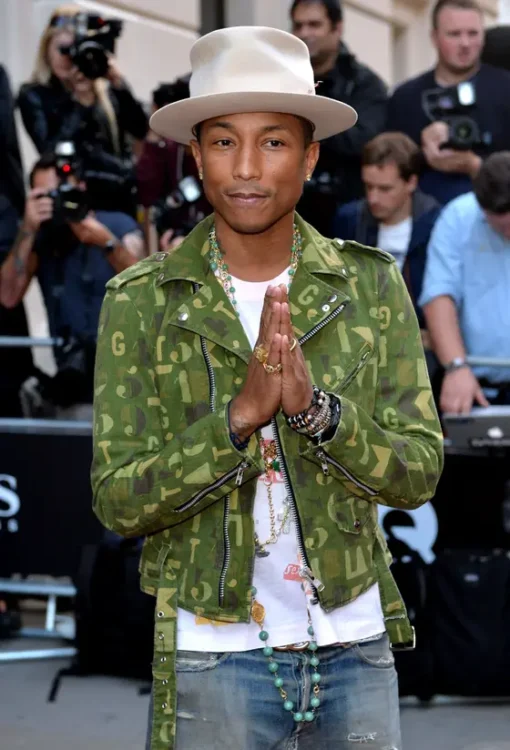
Pharrell Williams made the world dance with The Neptunes and N.E.R.D., but his genius extended far beyond music. His greatest works, from producing chart-toppers to creating Billionaire Boys Club and Ice Cream, turned him into a cultural architect. In fashion, he mixed luxury with skate culture, pioneering a playful, fearless approach. His oversized Vivienne Westwood hat became an instant icon, while his Chanel collaborations proved his influence in high fashion. Pharrell’s (born in 1973) legacy lies in breaking boundaries—showing men they could be eccentric, colorful, and experimental while still exuding effortless cool. Image Source
David Beckham – The Athlete Who Became a Style Empire
On the pitch with Manchester United and Real Madrid, David Beckham (born in 1975) was dazzling. Off it, he became something even rarer: a footballer who ruled fashion. His greatest works in sport were matched by a wardrobe that influenced millions—sarongs, leather jackets, sharp tailoring, or a perfectly fitted tee. Every hairstyle he debuted, from the buzz cut to the fauxhawk, became a global sensation. Beckham pioneered the modern “metrosexual” man, blending athletic masculinity with polished refinement. His legacy endures as proof that athletes can be fashion leaders, and that style can amplify global superstardom. Image Source
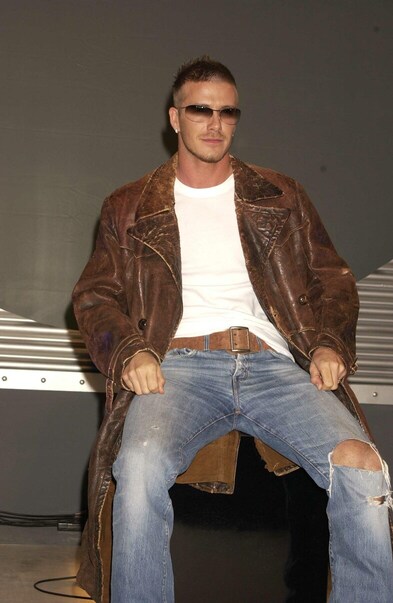
Tom Ford – The Designer Who Made Men Desire Again
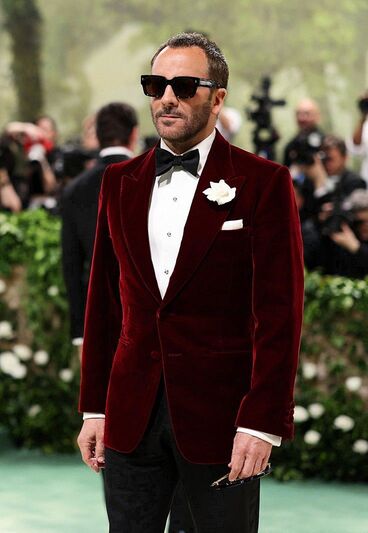
When Tom Ford revitalized Gucci in the 1990s, fashion became dangerous and seductive again. In the 2000s, he cemented his position as the master of modern menswear, later launching his own brand that embodied sleek masculinity. His greatest works include razor-sharp tailoring, velvet jackets, open-collar silk shirts, and bold monochromes. Ford’s personal uniform—dark suits, crisp white shirts, and cinematic confidence—became the aesthetic of powerful men worldwide. His influence wasn’t just about clothes; it was about attitude. Ford’s (born 1961) legacy is the heat he injected into menswear, proving elegance could be daring, sensual, and unapologetically commanding.
Jared Leto – The Shape-Shifting Rebel of Rock and Film
Jared Leto (born 1971) built a career on transformation—captivating in films like Requiem for a Dream and leading Thirty Seconds to Mars into global stardom. In fashion, he was just as chameleonic, merging bohemian rock with high fashion’s drama. The 2000s saw him fearlessly embrace eyeliner, leather pants, fitted blazers, and accessories that leaned toward glam-rock theatricality. Later, his partnership with Gucci would cement him as a true style maverick, but the roots lay here. Leto’s legacy is in proving that men’s fashion thrives on reinvention, and that charisma can make even the boldest look magnetic.
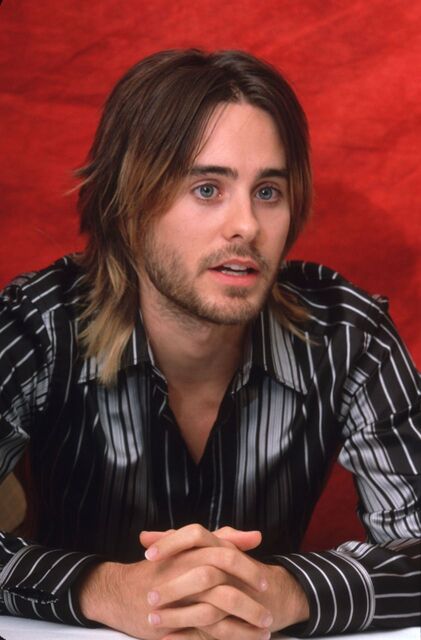
Jude Law – The Rogue Gentleman of British Style

Born in 1972, Jude Law became the epitome of the enigmatic leading man with films like The Talented Mr. Ripley, Cold Mountain, and Closer. On screen, he exuded irresistible allure; off it, he embodied refined British style. His wardrobe in the 2000s blended slim suits, tailored coats, and rakish scarves with an easy, off-duty charm. Jude’s fashion wasn’t about excess but about precision—well-cut clothes worn with confidence and boyish magnetism. His legacy is timeless: he showed men how to embrace European chic, mixing sophistication with just a touch of rebellious unpredictability. Image Source
Justin Timberlake – The Pop Prince Who Made Suit & Tie Cool Again
Justin Timberlake transitioned from *NSYNC superstardom to solo brilliance with Justified and FutureSex/LoveSounds. His fashion mirrored that evolution—moving from denim-on-denim youthfulness to crisp suits, trilby hats, and the polished swagger that later defined Suit & Tie. Timberlake’s ability to balance streetwise charm with Rat Pack elegance gave men of the 2000s a blueprint for mixing formal and casual. Whether in a leather jacket, a sharp vest, or full tux, JT always performed like a style chameleon. His enduring legacy? Making men embrace sharp tailoring without ever losing rhythm. Image Source
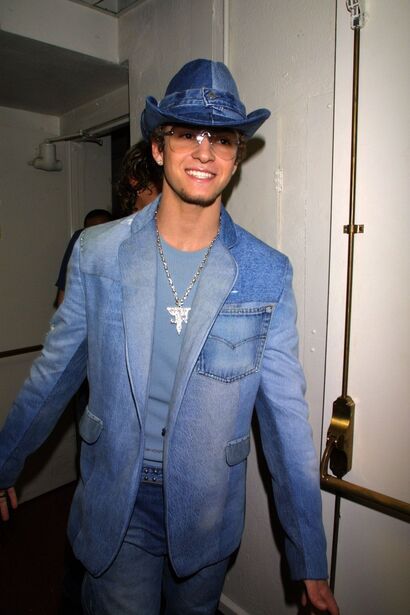
Ashton Kutcher – The Laid-Back Everyman of Y2K Style
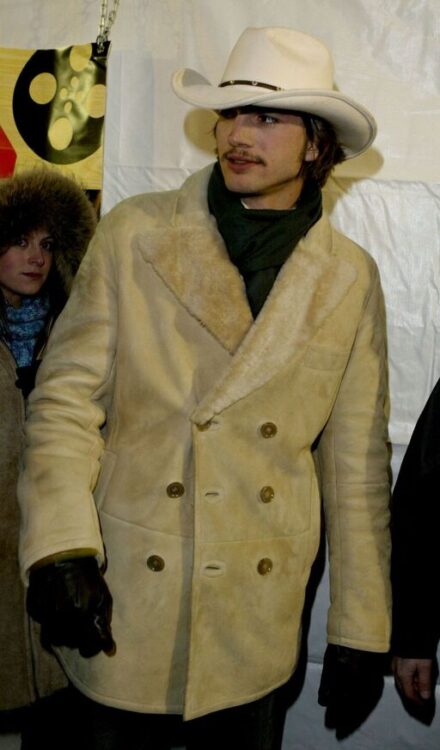
Ashton Kutcher shot to fame on That ’70s Show and later solidified his presence with roles in films and MTV’s Punk’d. His fashion sense reflected his easygoing charm—baseball caps, trucker hats, graphic tees, and casual jeans became his signatures. Kutcher embodied the laid-back, slightly mischievous aesthetic that defined early-2000s off-duty style. Unlike polished Hollywood peers, he made looking comfortable and accessible fashionable. His trucker hat phase in particular became iconic, influencing everyday wardrobes worldwide. Kutcher’s legacy lies in proving that relaxed, no-fuss dressing could still carry a confident, masculine cool. Image Source
Nelly – The Rapper Who Made Streetwear Luxe
Born Cornell Iral Haynes Jr. in 1974, Nelly exploded with Country Grammar and global hits like “Hot in Herre.” His style fused Midwest hip-hop roots with a taste for luxury—oversized jerseys, fitted caps, sweatbands, and later, designer denim. Few could forget his signature under-eye bandage, a small detail that became a fashion statement in itself. Nelly brought swagger to the mainstream, inspiring men to embrace hip-hop aesthetics with pride. By blending streetwear with a polished edge, he set the stage for today’s luxury-rap crossover. His fashion legacy remains one of audacity, confidence, and unapologetic flair.

Dean & Dan Caten – The Twin Tricksters Who Made Menswear Mischievous
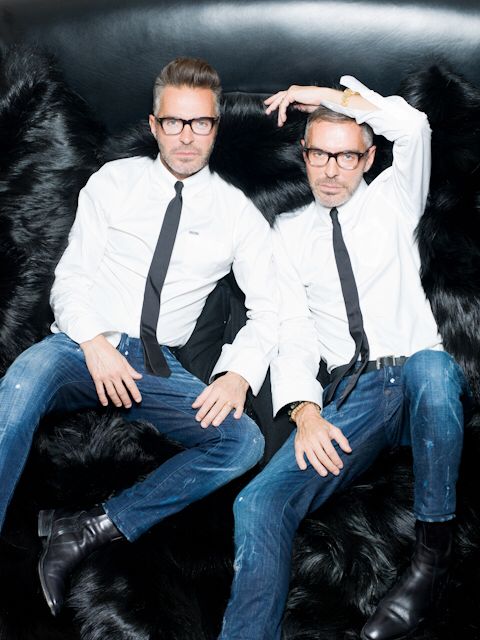
Dean and Dan Caten (born 1964), the Canadian twin masterminds behind Dsquared², turned the 2000s into a runway of attitude. After launching their label in the late ’90s, the decade was their playground: distressed denim with tuxedo jackets, cheeky slogans, leather-trimmed blazers, and enough glam energy to light up a stadium. Their shows weren’t just fashion—they were spectacles, often soundtracked by pop icons they dressed, from Madonna to Britney Spears. Their own sharp, twinning aesthetic—jeans, blazers, aviators—cemented them as fashion’s rock ’n’ roll duo. They made menswear playful, sexy, and globally relevant, leaving an indelible mark. image source
Kanye West – The Visionary Who Dressed the Future
Born in 1977, Kanye West broke into music with The College Dropout and reshaped hip-hop, but his influence on fashion may be just as seismic. From shutter shades to oversized polos in the 2000s, Kanye’s style evolved into minimalism and luxury streetwear, culminating in the Yeezy revolution. He blurred the line between high fashion and urban wear, proving sneakers could be as coveted as Italian leather shoes. His daring confidence inspired a generation to experiment with silhouettes and proportions. Kanye’s legacy lies in redefining men’s fashion as a playground for bold ideas and cultural statements. Image Source
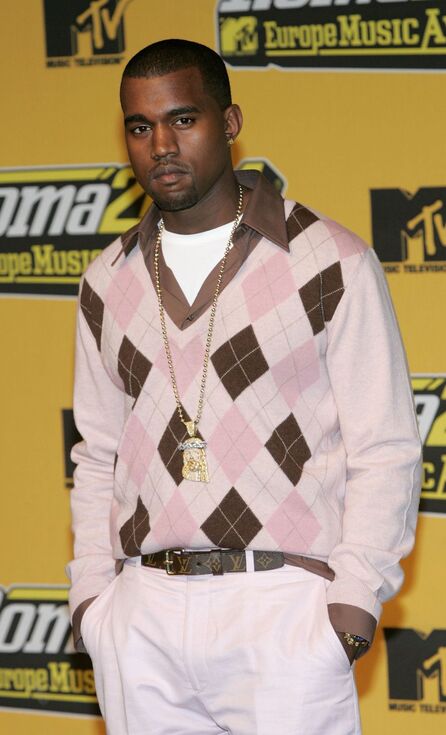
Daniel Craig – Reinventing 007 With Sharp Suits and Steel Nerves
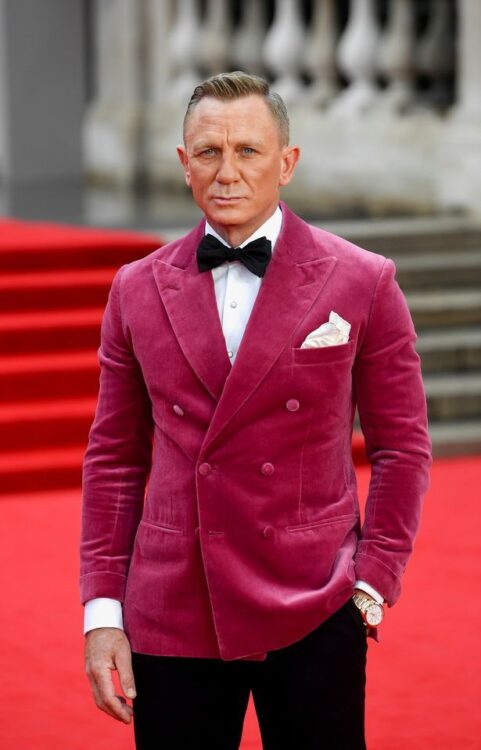
Daniel Craig ( Born in 1968) redefined James Bond starting with Casino Royale (2006), bringing grit and style to the legendary spy. His lean, athletic frame revitalized the tailored suit, emphasizing sharper cuts, narrower lapels, and bolder fits. Off-screen, Craig favored rugged casual wear—leather jackets, Henley shirts, and slim jeans—making understated masculinity modern again. He showed that elegance didn’t mean fragility; it could come with edge and strength. Craig’s Bond-era wardrobe became a global benchmark for men aiming to fuse refinement with toughness. His legacy? Proving that the modern gentleman could be both polished and fiercely powerful.
Rain (Jung Ji-Hoon) – The K-Pop Star Who Globalized Korean Cool
Rain rose to fame with hits like It’s Raining and cemented his global presence with Full House and Hollywood’s Ninja Assassin. His fashion sense fused slick K-pop aesthetics with versatile Western influences—tailored jackets, sleeveless shirts, and bold stagewear. Known for his daring confidence, Rain often played with sleek leather looks and experimental layering. He brought South Korean style to an international stage before the K-wave fully exploded, inspiring countless fans across Asia and beyond. His legacy in men’s fashion lies in making K-pop’s bold, hybrid aesthetic aspirational long before it became a global powerhouse.
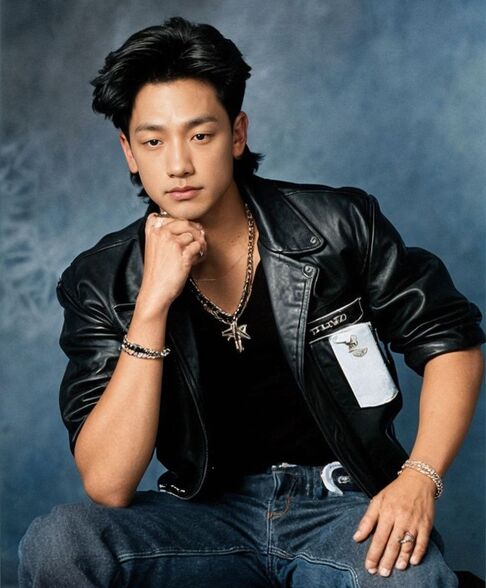
The Jonas Brothers – The Trio of Teen Heartthrobs Who Made Blazers and Skinny Jeans a Craze
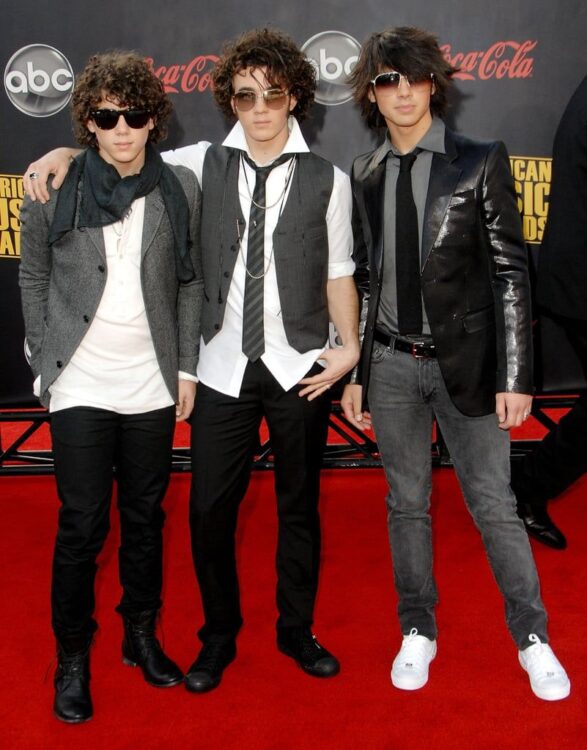
The Jonas Brothers—Kevin (born 1987), Joe (born 1989), and Nick (born 1992)—exploded onto the scene in the mid-2000s as Disney Channel’s golden boys, blending pop-rock hooks with a carefully crafted image. Their meteoric rise came with Camp Rock (2008) and chart-topping hits that made them household names. But beyond the music, they defined teen fashion for an era: skinny jeans, slim-fit blazers over graphic tees, layered scarves, Converse sneakers, and perfectly tousled hair. Millions of boys copied their accessible, slightly preppy, slightly rock-star look. The trio didn’t just soundtrack teenage dreams—they dressed them, setting a global template for youthful cool in the late 2000s.
Pete Doherty – The Indie Sleaze Poster Boy
Pete Doherty became notorious as The Libertines’ frontman, but equally so for his chaotic yet iconic style. His look mixed thrift-shop tailoring, skinny jeans, military coats, and the ever-present trilby hat, embodying the messy romance of indie sleaze. Pete didn’t dress polished—he dressed evocative, making disheveled chic fashionable. His aesthetic resonated with the bohemian youth of the 2000s, proving imperfection could be stylish. Love him or loathe him, Doherty made art out of decadence. His legacy endures in every man who dares to embrace rumpled charm and rock-star nonchalance as a badge of identity.
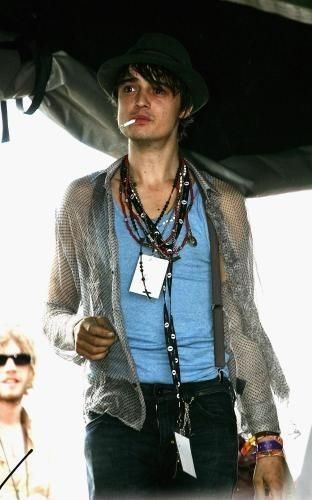
Enrique Bunbury – The Andalusian Style Auteur of the Era
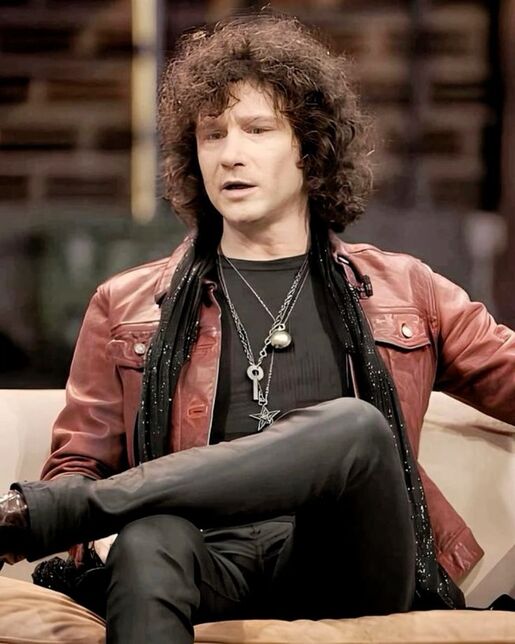
Born in 1967, Enrique Bunbury carried his legacy from Héroes del Silencio into a bold solo career that defined the 2000s Latin rock scene. Though he never clinched a Latin Grammy, his multiple nominations reflected his artistry. Bunbury’s style was nothing short of epochal: velvet blazers, leather trousers, skinny scarves, and a matador’s flair channeled through rock-and-roll glamour. His brooding charisma and unapologetically theatrical looks resonated well beyond Spanish-speaking audiences, cementing him as a global cult icon whose fashion was as unforgettable as his music.
Gerard Way – The Emo Visionary in Red and Black
Born in 1977, Gerard Way catapulted to fame as the lead vocalist of My Chemical Romance, with The Black Parade becoming an anthem of the era. His style was theatrical—military jackets, dyed hair, kohl eyeliner, and a wardrobe steeped in black and red. Way gave emo fashion its archetypal uniform, mixing punk rebellion with gothic drama. He turned vulnerability into an aesthetic, offering an alternative to mainstream masculinity. Beyond music, his fashion empowered fans to express their inner angst with flair. Gerard’s legacy is cemented in the subcultures that still draw on his visual and stylistic defiance.
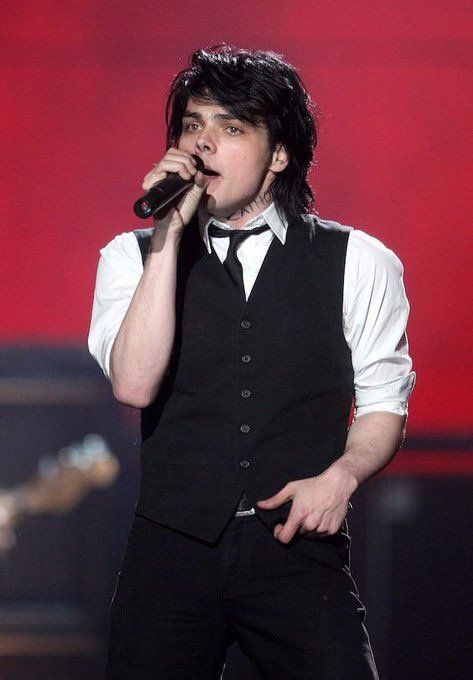
Takuya Kimura – Japan’s Style Samurai of Cool
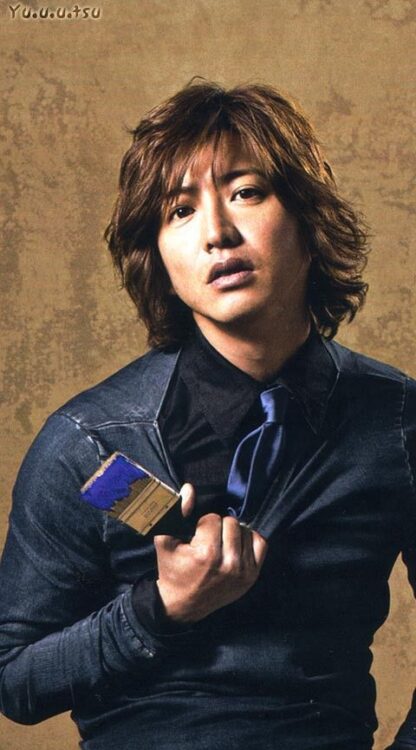
Takuya Kimura—member of SMAP and star of Hero and Long Vacation—became Japan’s ultimate fashion and cultural icon. His style blended rugged Japanese masculinity with Western influences: leather jackets, casual tailoring, and artfully tousled hair that sparked countless imitations. Kimura mastered effortless cool, embodying both accessibility and allure. He was not just an actor or singer, but the face of modern Japanese fashion in the 2000s, inspiring wardrobes across Asia. Born in 1972, Takuya Kimura’s legacy remains in showing how charisma and natural ease can turn everyday clothing into iconic style. Image source
Shah Rukh Khan – Bollywood’s King of Charm and Classic Style
Born in 1965, Shah Rukh Khan became Bollywood’s undisputed “King of Romance” with films like Dilwale Dulhania Le Jayenge and Kal Ho Naa Ho. In the 2000s, his fashion mirrored his cinematic charisma—sleek suits, leather jackets, and crisp casuals that struck the perfect balance between accessibility and sophistication. SRK often elevated simple looks with his signature swagger, whether in aviators, tailored blazers, or the casual unbuttoned shirt. His style was never about flash—it was about confidence, warmth, and presence. His legacy in men’s fashion lives on in his ability to make timeless, understated dressing feel aspirational yet approachable.
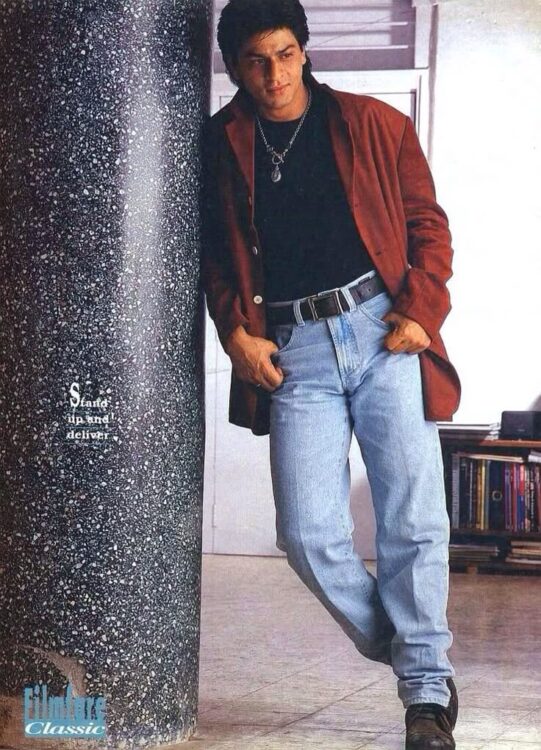
Thom Browne – The Designer Who Rewrote the Suit’s Rulebook
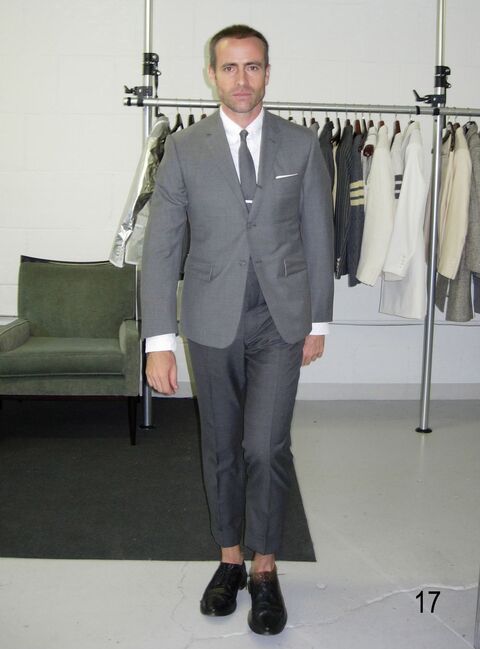
Thom Browne revolutionized tailoring in the 2000s with his cropped gray suits, narrow trousers, and shrunken proportions. What seemed quirky at first became one of the most influential menswear movements of the century. Browne’s approach—mixing heritage fabrics with avant-garde fits—gave men permission to reimagine the suit beyond boardrooms. His own uniform of short trousers, brogues, and ankle-baring socks became instantly recognizable. While others chased trends, Browne made classics disruptive. His enduring legacy is in making the suit playful, modern, and a cultural talking point—proof that tradition can always be subverted with style. Image Source: Vogue
David Gandy – The Dolce & Gabbana Muse Who Defined a Decade
David Gandy (born 1980) rose from an ITV modeling contest in 2001 to become the face that redefined male beauty. His turning point came in 2007 with Dolce & Gabbana’s Light Blue fragrance campaign, a sun-soaked vision that was seen by millions and instantly catapulted him to global fame. With his muscular frame, piercing blue eyes, and an elegant command of tailored fashion, Gandy shattered the era’s skinny-model mold and restored classical masculinity to the runway. While his dominance continued into the 2010s, it was the late 2000s that made him the ultimate male supermodel—an enduring benchmark of power, polish, and sex appeal.
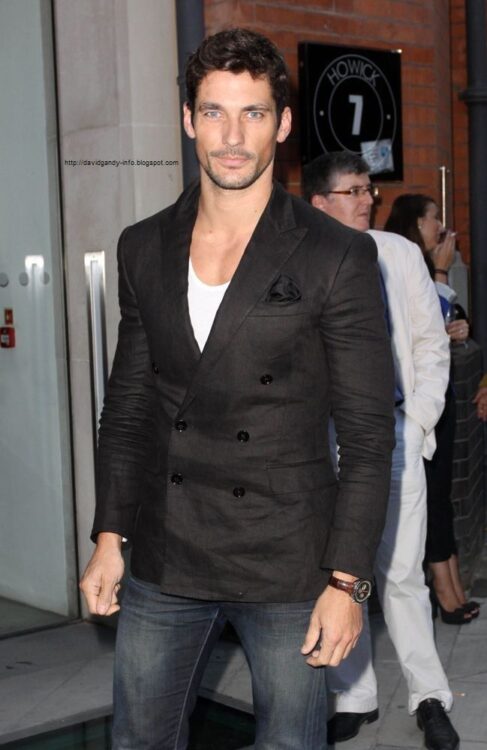
Chad Michael Murray – The Teen Heartthrob Who Styled Early 2000s Cool
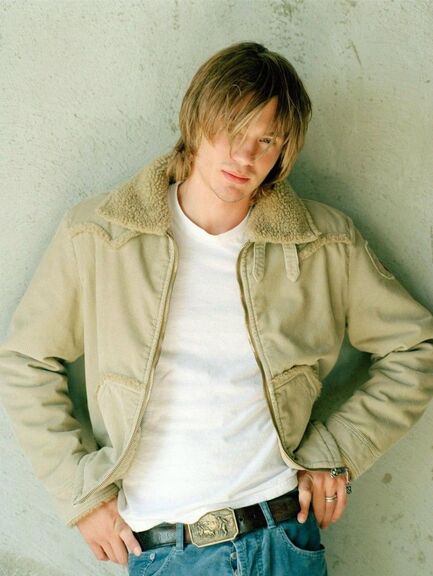
Chad Michael Murray (Born in 1981) became a household name through One Tree Hill and A Cinderella Story, defining early-2000s teen stardom. His fashion reflected the era’s casual preppy cool—layered shirts, leather jackets, distressed denim, and messy blond hair that became his trademark. Murray’s style spoke directly to young men trying to balance boy-next-door charm with a touch of bad-boy edge. While not a high-fashion figure, he became highly emulated among teenagers in the decade. His legacy lies in capturing the laid-back, aspirational aesthetic of 2000s youth culture, when TV stars were fashion heroes in their own right.
Johnny Depp – The Eccentric Gentleman of Bohemian Style
Johnny Depp (Born in 1963) ruled Hollywood with films like Pirates of the Caribbean and Finding Neverland. His fashion sense was just as captivating—fedoras, layered scarves, waistcoats, tinted glasses, and an armory of silver rings became his signatures. Depp embodied the bohemian dandy: part rock star, part old-world vagabond. His ability to mix vintage tailoring with eccentric accessories set him apart as a true original. He made eclecticism desirable, showing that personal quirks could become fashion strengths. Depp’s enduring legacy in style is that individuality—done with conviction—can rival even the most polished wardrobes.
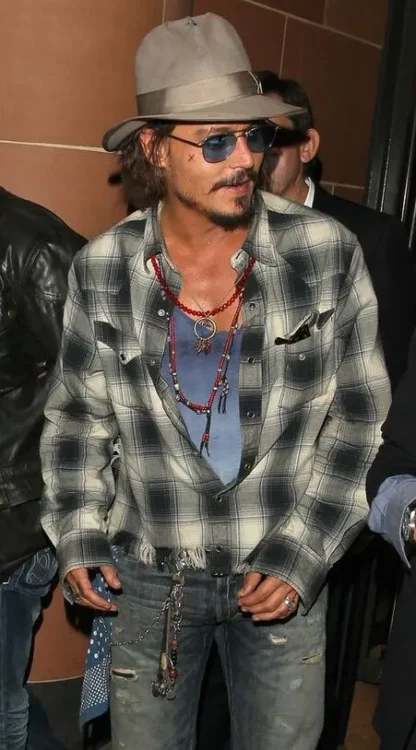
Heath Ledger – The Lost Legend of Laid-Back Style
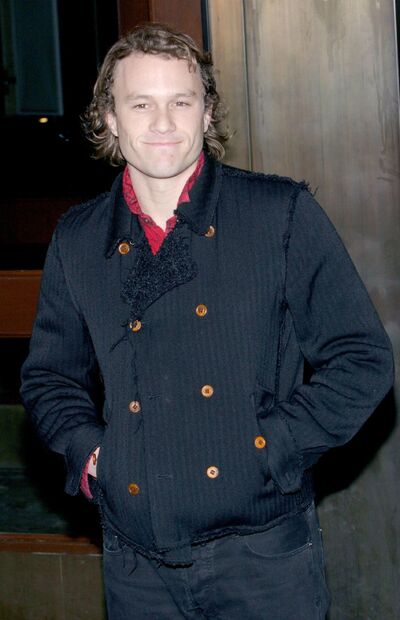
Born in 1979, Heath Ledger charmed the world with 10 Things I Hate About You and won immortality with The Dark Knight. Off-screen, his style was understated yet magnetic: knitwear, leather jackets, relaxed trousers, and a preference for earthy tones that highlighted his natural charisma. Ledger’s fashion was about subtle rebellion—effortless rather than polished, approachable yet unique. He embodied the laid-back masculinity of the 2000s, making casual dressing look cinematic. Though his life was cut short, Ledger’s fashion legacy remains in his unstudied coolness—proof that true style comes not from effort, but authenticity. Image Source
Gackt – Japan’s Rockstar Aristocrat of Style
Gackt (born as Gakuto Oshiro in Okinawa, Japan, in 1973) became one of Japan’s most iconic musicians, blending rock, pop, and visual artistry. His fashion was as theatrical as his performances—ornate military jackets, leather ensembles, dramatic hair, and accessories that made him look like a modern samurai aristocrat. In the 2000s, Gackt stood as a visual kei pioneer, embodying glam-rock and gothic elegance with cinematic flair. His influence stretched beyond Japan, inspiring fans across Asia to embrace bold, experimental aesthetics. Gackt’s enduring legacy is proving that men’s fashion could be unapologetically flamboyant, romantic, and rooted in storytelling. image source
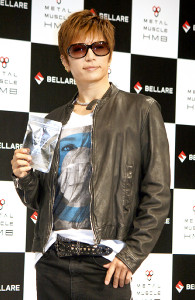
Jonny Johansson – The Minimalist Mastermind of Acne Studios

Jonny Johansson (Born in 1969) co-founded Acne Studios in 1996, but it was in the 2000s that his label exploded globally. Johansson’s genius lay in fusing Scandinavian minimalism with cultural edge—think raw denim, boxy tailoring, and clean lines that felt effortless yet innovative. Acne became the poster child for contemporary Scandinavian luxury, beloved by creatives worldwide. Johansson himself embodied the understated, art-driven aesthetic, preferring quiet confidence over spectacle. His legacy is monumental: he proved that fashion could be intellectual yet wearable, elevating Scandinavian design into a globally respected movement in men’s style. Image Source
The 2000s may now feel like a bygone era, but its fashion spirit still pulses through modern style, far from forgettable. This was the decade that tossed the style rulebook out the window, globalized taste at lightning speed, and proved that men could be just as daring, diverse, and dramatic in their wardrobes as anyone else. These 25 icons didn’t just wear the trends—they lived them, bent them, and made them unforgettable. And really, isn’t that what true style is all
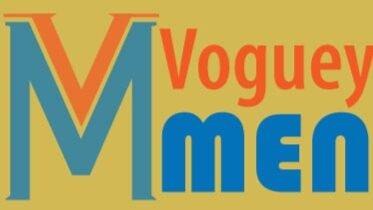
Your writing is like a breath of fresh air in the often stale world of online content. Your unique perspective and engaging style set you apart from the crowd. Thank you for sharing your talents with us.